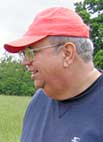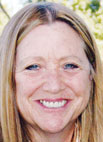
Carl Huff has built a solid herd with solid Angus genetics
To paraphrase the old John Denver song, Carl Huff’s version would be: “Country roads, take me home To the place I belong — Douglas County, in Missouri, Take me home, country roads.”
Carl grew up on the original 40 acres owned by his parents, southwest of Ava, Mo. His dad expanded that acreage to total 375, which Carl bought them in 1972.
Carl had, in the interim, attended high school and at School of the Ozarks and parlayed his success in the construction industry in Kansas City, Mo., into the possible finances to purchase this property, as well as some owned by his grandmother since the late 1800s.
The beautiful, well-maintained ranch, with five-cable, pipe, or six-strand, tight barbed wire fence throughout the 1,100 acres have pastures and lanes designed so as to make it easy to move cattle from 2 miles away.
His Double-H Ranch currently consists of 330 Angus cows; 165 each of fall and spring calving so as to be able to market 150 calves from each calving season.
He AI’s the virgin heifers to the very best sires that will improve calving ease, carcass traits, disposition, rapid growth and meat tenderness.
His AI routine consists of synchronizing all the virgin heifers as one group, then the 2- and 3-year olds as a separate group, each fall and spring season to calve in August and September, then February and March. To make it work requires a good nutrition program, especially on the virgin heifers, to allow a conception rate that results in the majority of calves being born in the first few days of calving season. He typically uses the seven-day CIDR program, which completes the breeding, regardless of number of cows, in 10 days.
He has an exceptionally well-designed, enclosed working facility with pens to hold 50 head each that are graveled and open into a lane that feed into the “tub” before they enter the long alley entering the hydraulic squeeze chute.
Working cattle in his facility is a pleasant experience with the combination of pea gravel in the pens, concrete floors elsewhere and the hydraulic chute.
Carl soil tests every field every two years to maintain proper fertility, and raises all the hay fed to the Angus cows. He markets his cattle through two main avenues – the very best bulls are sold to cow/calf operators through private treaty, and the rest are sold to the Ozarks Regional Livestock Center in West Plains, Mo., where he has experienced exceptional profitability.
When asked what advice he might have for young farmers wanting to begin a beef cattle enterprise, Carl advised would-be-producers to get a little experience.
“One of the best ways to get in is to go to work for someone that’s doing an excellent job and maybe wants to pass on the farm to the right person, and learn how to do things correctly,” he said. “Then make a deal to start buying younger cattle with the option to buy the ranch and cattle, thereby getting it done without having to borrow money.”
Given Carl’s AI program and the successful operation of the ranch overall, this would be an ideal place to put that advice into practice.






